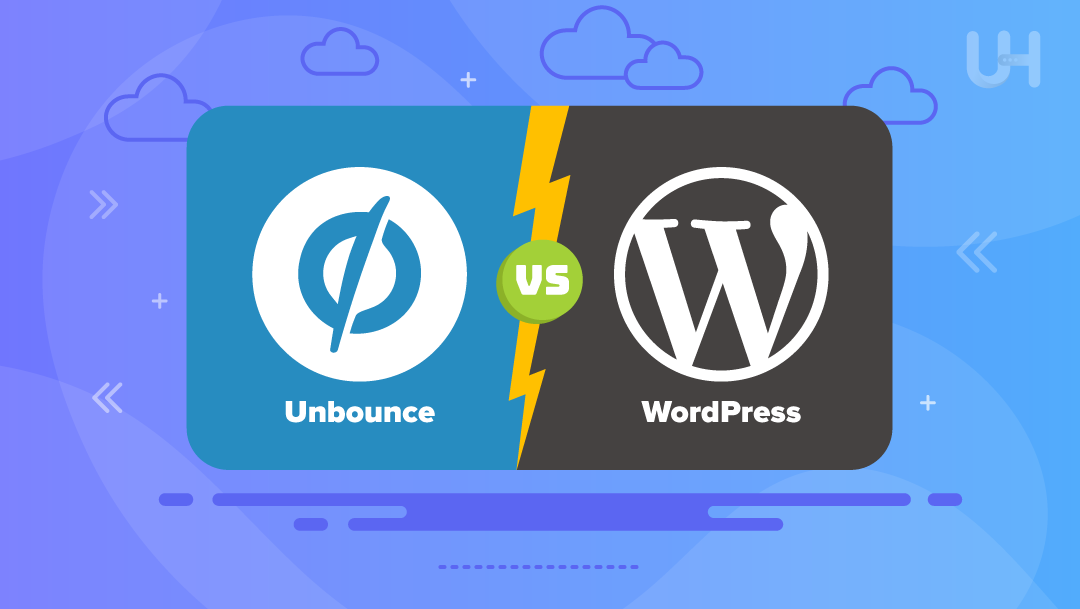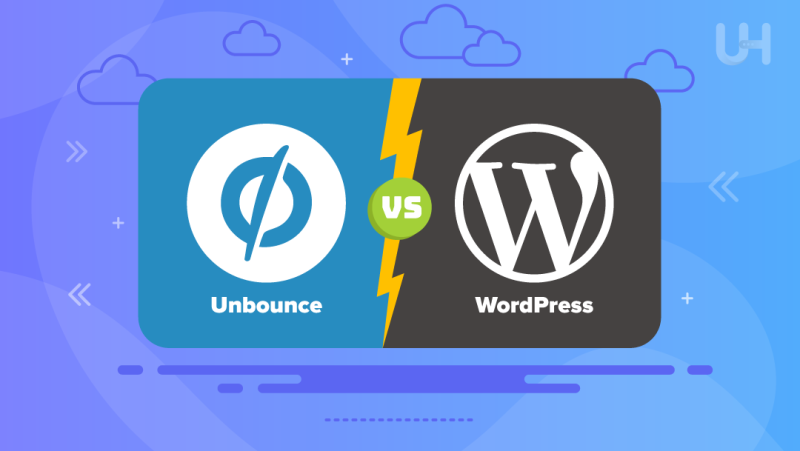Unbounce excels in creating high-converting landing pages, while WordPress offers extensive customization and versatility for building full websites. Your choice depends on your specific needs and goals.
Choosing the right platform is crucial for your online success. Unbounce focuses on creating effective landing pages designed to maximize conversions. This tool is perfect for marketers who need quick, high-performing pages without the hassle of coding. On the other hand, WordPress provides a robust framework for building comprehensive websites, offering flexibility and a wide array of plugins.
It’s ideal for those seeking full control over design and functionality. Understanding the strengths of each platform will help you make an informed decision that aligns with your business objectives.
Overview Of Unbounce
Unbounce is a powerful platform for creating landing pages. It helps businesses build, publish, and test landing pages quickly. Its main focus is conversion optimization. With Unbounce, users can create high-converting pages without coding knowledge.
Key Features
- Drag-and-Drop Builder: Easily design pages with a simple interface.
- A/B Testing: Test different versions of pages to see which performs best.
- Templates: Access to hundreds of pre-designed templates for various industries.
- Integrations: Seamlessly connect with other marketing tools like MailChimp and HubSpot.
- Mobile Responsiveness: Ensure your pages look great on all devices.
- Pop-ups and Sticky Bars: Enhance engagement with targeted pop-ups and sticky bars.
Pros And Cons
| Pros | Cons |
|---|---|
|
|

Overview Of WordPress
WordPress is a popular content management system. It powers over 40% of websites. It is known for its flexibility and user-friendly interface. Many businesses and individuals prefer WordPress. It offers extensive customization options.
Key Features
- Open-source: WordPress is free and open-source software.
- Plugins: Over 50,000 plugins available for various functionalities.
- Themes: Thousands of themes for different designs.
- SEO-Friendly: Built-in features and plugins for SEO.
- Community Support: Large community for help and resources.
Pros And Cons
| Pros | Cons |
|---|---|
|
|
Ease Of Use
Choosing the right platform for your website can be challenging. Ease of use is crucial. A platform that’s easy to use saves time. It also reduces the chances of errors. Let’s compare Unbounce and WordPress in this aspect.
User Interface
Unbounce has a modern and intuitive user interface. It features drag-and-drop functionality. This makes it simple for beginners. Users can create landing pages without coding.
WordPress offers a more traditional interface. It includes a dashboard with various options. While it’s comprehensive, it might seem overwhelming initially. But, it allows for extensive customization.
Learning Curve
The learning curve for Unbounce is gentle. Its simplicity helps new users. No need for coding knowledge. Tutorials and guides are available for additional help. Users can quickly get up and running.
WordPress has a steeper learning curve. It offers more features and flexibility. But, this complexity can be daunting. Users might need to spend more time learning. There are numerous resources available, though.
| Feature | Unbounce | WordPress |
|---|---|---|
| User Interface | Intuitive, drag-and-drop | Traditional, more complex |
| Learning Curve | Gentle, beginner-friendly | Steeper, requires more time |
Both platforms have their strengths. Unbounce is great for simplicity. WordPress excels in flexibility.
Customization Options
Choosing the right platform for your website is crucial. One key factor is the customization options. Let’s dive into the customization features of Unbounce and WordPress.
Themes And Plugins
WordPress excels in themes and plugins. It offers thousands of free and premium themes. Plugins extend functionality with ease. You can transform your site without coding.
Unbounce focuses on landing pages. It offers a limited selection of themes. Plugins are fewer compared to WordPress. But, it provides essentials for high-conversion pages.
| Feature | WordPress | Unbounce |
|---|---|---|
| Themes | Thousands available | Limited selection |
| Plugins | Extensive library | Limited but essential |
Design Flexibility
WordPress offers unmatched design flexibility. You can customize every aspect of your site. Drag-and-drop builders make design easy. It suits both beginners and experts.
Unbounce focuses on ease of use. It offers a drag-and-drop builder. No coding skills are needed. It’s perfect for quick and effective landing pages.
- WordPress: Highly customizable, suits all skill levels
- Unbounce: User-friendly, ideal for landing pages
Both platforms offer unique customization options. Your choice depends on your needs.
Seo Capabilities
Choosing the right platform for your website is crucial. It can affect your site’s SEO performance. Unbounce and WordPress both offer unique SEO capabilities. Let’s dive into the specifics.
Built-in Tools
Unbounce offers a range of built-in tools for SEO. It includes meta tags, alt text for images, and custom URLs. These tools make it easy to optimize your landing pages.
WordPress excels in built-in SEO tools. It provides features like custom permalinks, meta tags, and image optimization. Plus, it allows for easy content updates, which is great for SEO.
Third-party Integrations
Unbounce supports various third-party integrations. You can connect your site with Google Analytics, Facebook Pixel, and other SEO tools. These integrations help you track and improve your SEO efforts.
WordPress offers extensive third-party integrations. Popular plugins like Yoast SEO, All in One SEO Pack, and Rank Math enhance your site’s SEO. These plugins provide advanced features and analytics.
| Feature | Unbounce | WordPress |
|---|---|---|
| Meta Tags | Yes | Yes |
| Custom URLs | Yes | Yes |
| Image Optimization | Yes | Yes |
| SEO Plugins | No | Yes |
| Third-Party Integrations | Yes | Yes |
Both platforms have strong SEO capabilities. Unbounce focuses on ease of use and built-in features. WordPress offers more flexibility with plugins and integrations.
Cost Comparison
Choosing the right platform often comes down to cost. Let’s compare Unbounce and WordPress to help you make an informed decision.
Subscription Models
Both Unbounce and WordPress offer different subscription models. These models cater to various user needs and budgets.
| Platform | Basic Plan | Premium Plan |
|---|---|---|
| Unbounce | $90/month | $225/month |
| WordPress | $4/month | $45/month |
Unbounce’s basic plan starts at $90 per month. WordPress offers a basic plan at $4 per month.
Additional Costs
Both platforms have additional costs beyond the subscription models.
- Unbounce: Custom domain, extra traffic, and advanced features cost more.
- WordPress: Themes, plugins, and hosting services add to the cost.
Unbounce may require extra payment for custom domains. WordPress often needs paid themes and plugins for added functionality.
These additional costs can impact your overall budget. Always consider these extra expenses before choosing a platform.
Use Cases
Choosing the right platform depends on your specific needs. Unbounce and WordPress each excel in different areas. Understanding their use cases helps in making the best decision.
Best For Landing Pages
Unbounce is the ideal choice for creating landing pages. It offers drag-and-drop functionality. This makes it easy to build pages quickly.
With Unbounce, you get pre-designed templates. These templates are optimized for conversion. This ensures your landing pages perform well.
Unbounce also offers A/B testing. This feature lets you test different page versions. You can see which performs better.
WordPress can also create landing pages. But it requires plugins like Elementor. This adds complexity and extra steps.
Best For Full Websites
WordPress is best for building full websites. It offers extensive customization. You can choose from thousands of themes and plugins.
WordPress is also SEO-friendly. It has plugins like Yoast SEO. These help optimize your site for search engines.
You can create blogs, e-commerce sites, and more with WordPress. It is highly versatile.
Unbounce is not designed for full websites. It focuses on landing pages only. For a complete website, WordPress is the better choice.
| Feature | Unbounce | WordPress |
|---|---|---|
| Landing Pages | Excellent | Good |
| Full Websites | Poor | Excellent |
| Customization | Limited | Extensive |
| SEO Features | Basic | Advanced |
Final Thoughts
Choosing between Unbounce and WordPress can be challenging. Each platform has its unique strengths. Your decision should align with your specific goals and needs.
Which To Choose
If you need a powerful landing page builder, Unbounce is the way to go. Unbounce offers extensive A/B testing and easy drag-and-drop features. It’s perfect for marketers who want to optimize conversions quickly.
WordPress, on the other hand, is incredibly versatile. It offers a wide range of plugins and themes. WordPress is ideal for those who want a comprehensive website with blogging capabilities and eCommerce options.
Future Considerations
- Scalability: WordPress supports large websites with extensive content.
- Customization: WordPress offers more customization options with plugins and themes.
- Ease of Use: Unbounce is user-friendly with its drag-and-drop builder.
- SEO: WordPress provides robust SEO plugins like Yoast SEO.
| Feature | Unbounce | WordPress |
|---|---|---|
| Landing Pages | Excellent | Good |
| Overall Flexibility | Limited | Extensive |
| SEO Tools | Basic | Advanced |
| User Experience | Easy | Moderate |
Both platforms have their own advantages. Choose the one that best fits your needs and future goals.

Frequently Asked Questions
What Is Unbounce?
Unbounce is a landing page builder designed for marketers. It helps create high-converting landing pages without coding skills. Users can quickly A/B test and optimize their pages for better performance.
How Does WordPress Differ From Unbounce?
WordPress is a versatile content management system (CMS). It supports blogs, websites, and e-commerce. Unbounce focuses on creating and optimizing landing pages. WordPress offers more flexibility but requires more setup.
Which Platform Is Better For Seo?
WordPress offers extensive SEO plugins and customization. Unbounce provides built-in SEO features but is limited. For comprehensive SEO, WordPress is generally better.
Is Unbounce Easier To Use Than WordPress?
Unbounce is user-friendly with a drag-and-drop interface. WordPress has a steeper learning curve but offers more customization. Unbounce is quicker for creating landing pages.
Conclusion
Choosing between Unbounce and WordPress depends on your specific needs. Unbounce excels in landing pages and A/B testing. WordPress offers extensive customization and scalability. Assess your business goals and technical skills. Both platforms have strengths, so choose the one that aligns best with your objectives.
Make an informed decision for optimal results.
